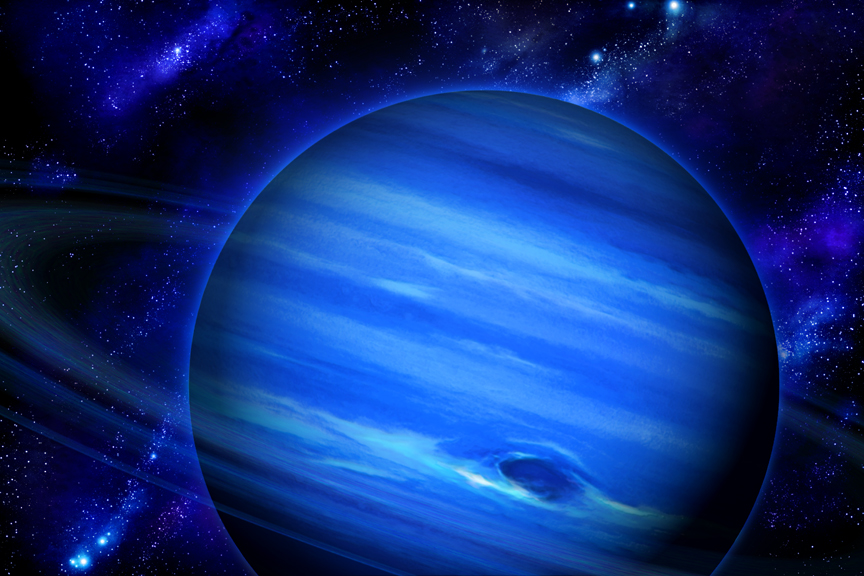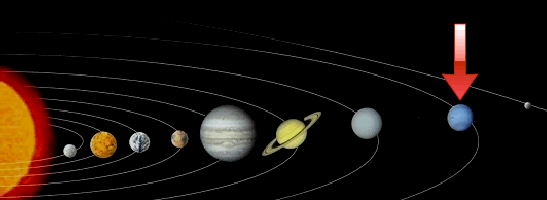 Neptune is the eighth planet from the sun. It is the last planet in our solar system. Neptune is considered a Gas Giant and an Ice Giant. It is the most dense out of all the Gas Giant planets. Neptune's atmosphere is made up of hydrogen and helium along with hydrocarbons, fuel that humans use, and maybe even nitrogen. Because it is the last planet from the sun, Neptune has the coldest outer atmospheric temperature out of the eight planets.
Neptune is the eighth planet from the sun. It is the last planet in our solar system. Neptune is considered a Gas Giant and an Ice Giant. It is the most dense out of all the Gas Giant planets. Neptune's atmosphere is made up of hydrogen and helium along with hydrocarbons, fuel that humans use, and maybe even nitrogen. Because it is the last planet from the sun, Neptune has the coldest outer atmospheric temperature out of the eight planets. Neptune has a place in it's southern hemisphere called the Great Dark Spot which is similar to Jupiter's Great Red Spot. The Great Dark Spot, like the Great Red Spot, has wind speeds that can reach as high as 2,100 km/h. Five years later after the discovery of the Great Dark Spot, the Hubble Telescope found another cyclone, known as the Scooter, that moved even faster than the spot. It was located in the planet's northern hemisphere. Like Uranus, Neptune is consisted of ice and rocks. Astronomers believe that there are various types of methane that makes up the blue color of Neptune.
 It takes 18 hours for Neptune's equator to rotate on its axis. It takes Neptune about 165 years to complete an orbit around the sun. Neptune's tilt is almost the same as Earth's and Mar's tilt which is about 28.3 degrees. Due to the same tilt degree as Earth, this planet also has seasons, but it takes about 40 years for a season to change into another. ( 165 years divided by 4 seasons is about 40 years for every season.) Neptune is about 4.503 million km. away from the sun.
It takes 18 hours for Neptune's equator to rotate on its axis. It takes Neptune about 165 years to complete an orbit around the sun. Neptune's tilt is almost the same as Earth's and Mar's tilt which is about 28.3 degrees. Due to the same tilt degree as Earth, this planet also has seasons, but it takes about 40 years for a season to change into another. ( 165 years divided by 4 seasons is about 40 years for every season.) Neptune is about 4.503 million km. away from the sun. Neptune's name came from the Roman Mythology, the God of the Sea, Neptune. Neptune has 14 satellites and few, thin planetary rings.
No comments:
Post a Comment